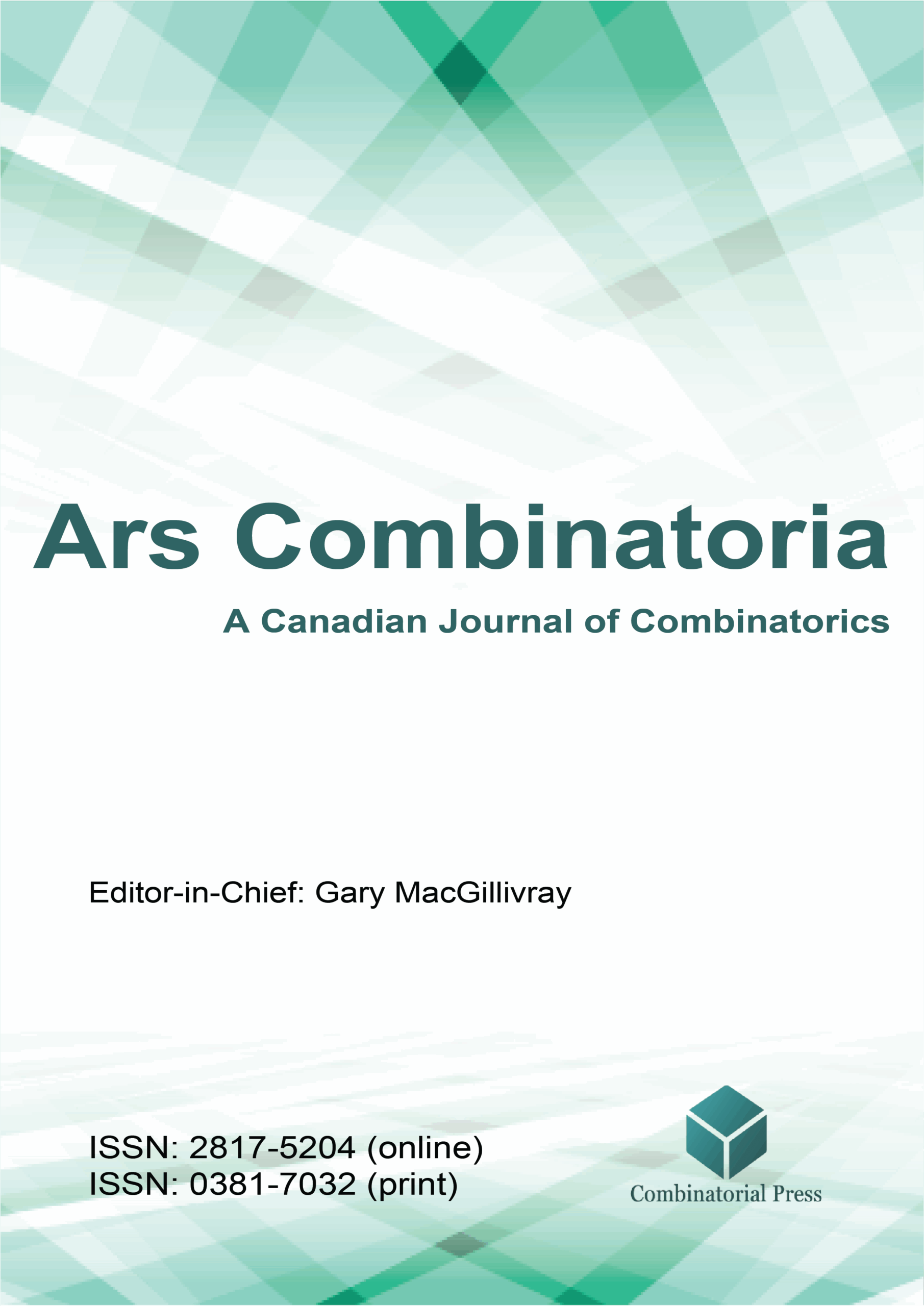
Ars Combinatoria
ISSN 0381-7032 (print), 2817-5204 (online)
Ars Combinatoria is the oldest Canadian Journal of Combinatorics, established in 1976. The journal is dedicated to advancing the field of combinatorial mathematics through the publication of high-quality research papers. From 2024 onward, it publishes four volumes per year in March, June, September and December. Ars Combinatoria has gained recognition and visibility in the academic community and is indexed in renowned databases such as MathSciNet, Zentralblatt, and Scopus. The Scope of the journal includes Graph theory, Design theory, Extremal combinatorics, Enumeration, Algebraic combinatorics, Combinatorial optimization, Ramsey theory, Automorphism groups, Coding theory, Finite geometries, Chemical graph theory but not limited.
Information Menu
- Research article
- Full Text
- Ars Combinatoria
- Volume 132
- Pages: 357-369
- Published: 30/04/2017
Let
- Research article
- Full Text
- Ars Combinatoria
- Volume 132
- Pages: 339-356
- Published: 30/04/2017
In the paper, we show that the orientable genus of the generalized Petersen graph
- Research article
- Full Text
- Ars Combinatoria
- Volume 132
- Pages: 331-338
- Published: 30/04/2017
Assume that
- Research article
- Full Text
- Ars Combinatoria
- Volume 132
- Pages: 323-329
- Published: 30/04/2017
In this note, we provide a combinatorial proof of a recent formula for the total number of peaks and valleys (either strict or weak) within the set of all compositions of a positive integer into a fixed number of parts.
- Research article
- Full Text
- Ars Combinatoria
- Volume 132
- Pages: 311-321
- Published: 30/04/2017
The adjacent vertex distinguishing total chromatic number
- Research article
- Full Text
- Ars Combinatoria
- Volume 132
- Pages: 295-309
- Published: 30/04/2017
Let
- Research article
- Full Text
- Ars Combinatoria
- Volume 132
- Pages: 285-294
- Published: 30/04/2017
A pebbling move on a graph
- Research article
- Full Text
- Ars Combinatoria
- Volume 132
- Pages: 269-283
- Published: 30/04/2017
Graph embedding is an important factor to evaluate the quality of an interconnection network. It is also a powerful tool for implementation of parallel algorithms and simulation of different interconnection networks. In this paper, we compute the exact wirelength of embedding circulant networks into cycle-of-ladders.
- Research article
- Full Text
- Ars Combinatoria
- Volume 132
- Pages: 257-267
- Published: 30/04/2017
In this paper, we characterize the extremal digraph with the maximal signless Laplacian spectral radius and the minimal distance signless Laplacian spectral radius among all simple connected digraphs with a given dichromatic number, respectively.
- Research article
- Full Text
- Ars Combinatoria
- Volume 132
- Pages: 241-255
- Published: 30/04/2017
Given a graph
Call for papers
Special issue: Proceedings of International Conference on Discrete Mathematics (ICDM 2025)





